Where we are staying in our hotel in a bustling downtown area, there is a lot of honking as drivers communicate with each other often to squeeze past each other in tight passages. For some people, the sound of traffic would be an unwelcome symphony, especially at night. However, there is a meditation technique for this—lean into the sound. Instead of resisting something you cannot change, you welcome the traffic sounds, come to expect them, and change your mindset that their existence soothes, rather than disrupts, you. This concept that “what’s in the way, is the way” demonstrates flexibility and awareness that the object bringing discord is always an opportunity to evolve in your own mastery of emotions and mindset. Such flexibility is often required on medical missions where any number of things in a plan can work out different than expected.
Today our medical supplies boxes did not meet us at the hospital as planned. Instead, they were held, via a new rule, until the Ministry of Health could approve and release them. This meant that Opening Clinic, where 200+ people were waiting since 7a, had a delayed start and went well into the evening. Although everyone was anxious to start seeing and helping patients who had traveled from so far to see us, we had no choice but to wait on a situation outside of our control. As we walked through the hospital strategizing the flow of intake and surgery, we noticed that our patients were very eager to take pictures of us. As a means to pass the time for our patients and show our friendship to them, we walked out into the masses of people waiting and just started smiling and standing still so they could approach us. Even with the language barrier, it was not long before circles would form around us and people wanted to take turns taking pictures with us and their children. As the photojournalist, it is odd to have so many more photos taken of me than I of them but there was a definite bond of trust formed as they told us how to position and pose while we moved and smiled for the hundreds of cameras at their request. Their later patience and receptivity of our requests upon intake were met often with smiles and agreement.
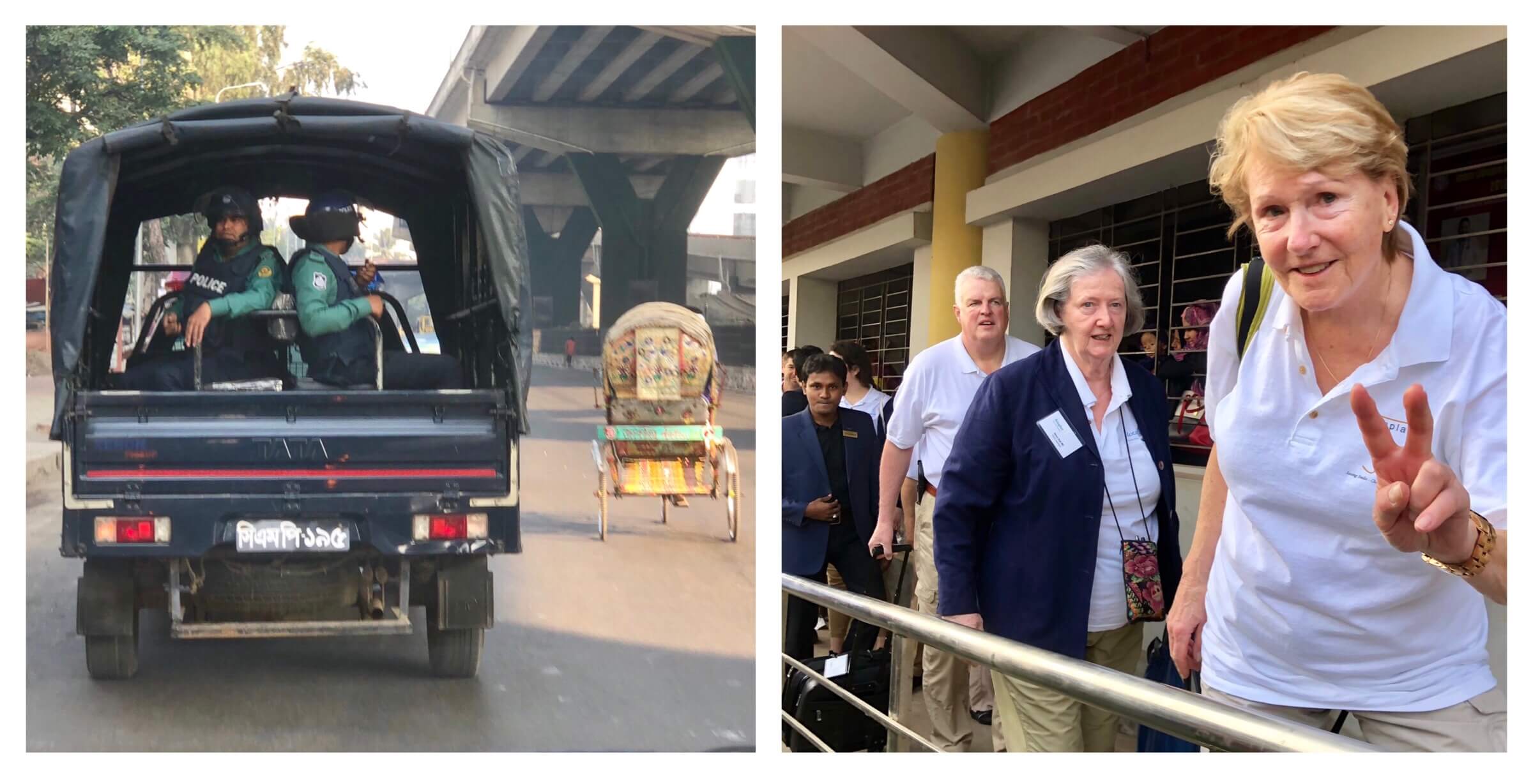
[Polic transport us to and from hotel—hospital. Walking into Opening Clinic ready (L->R) Randall Floyd (Mission Director), Helen O’Keeffe Vajk (PACU Assistant), Margret Watson Hopkins (PACU Nurse)]

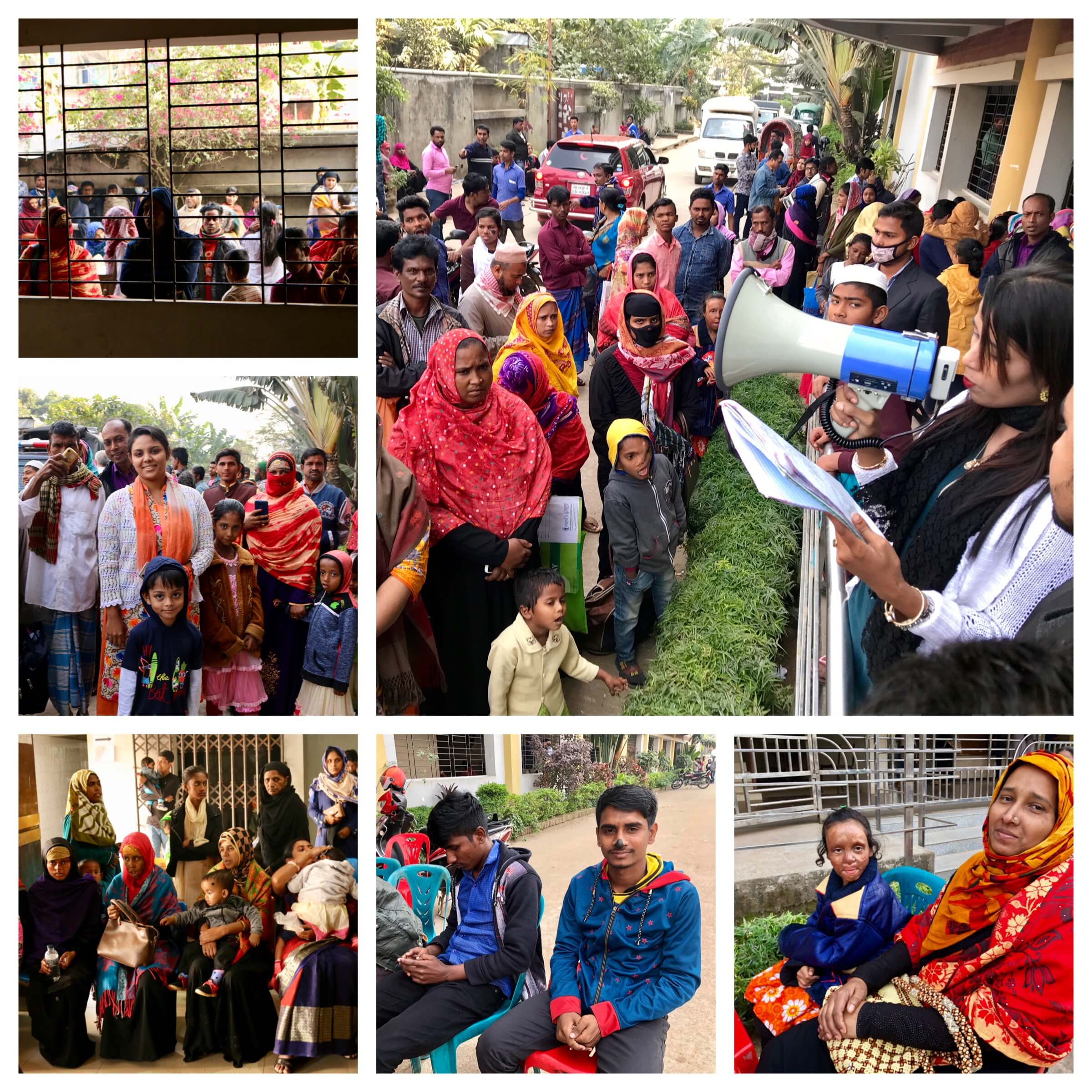
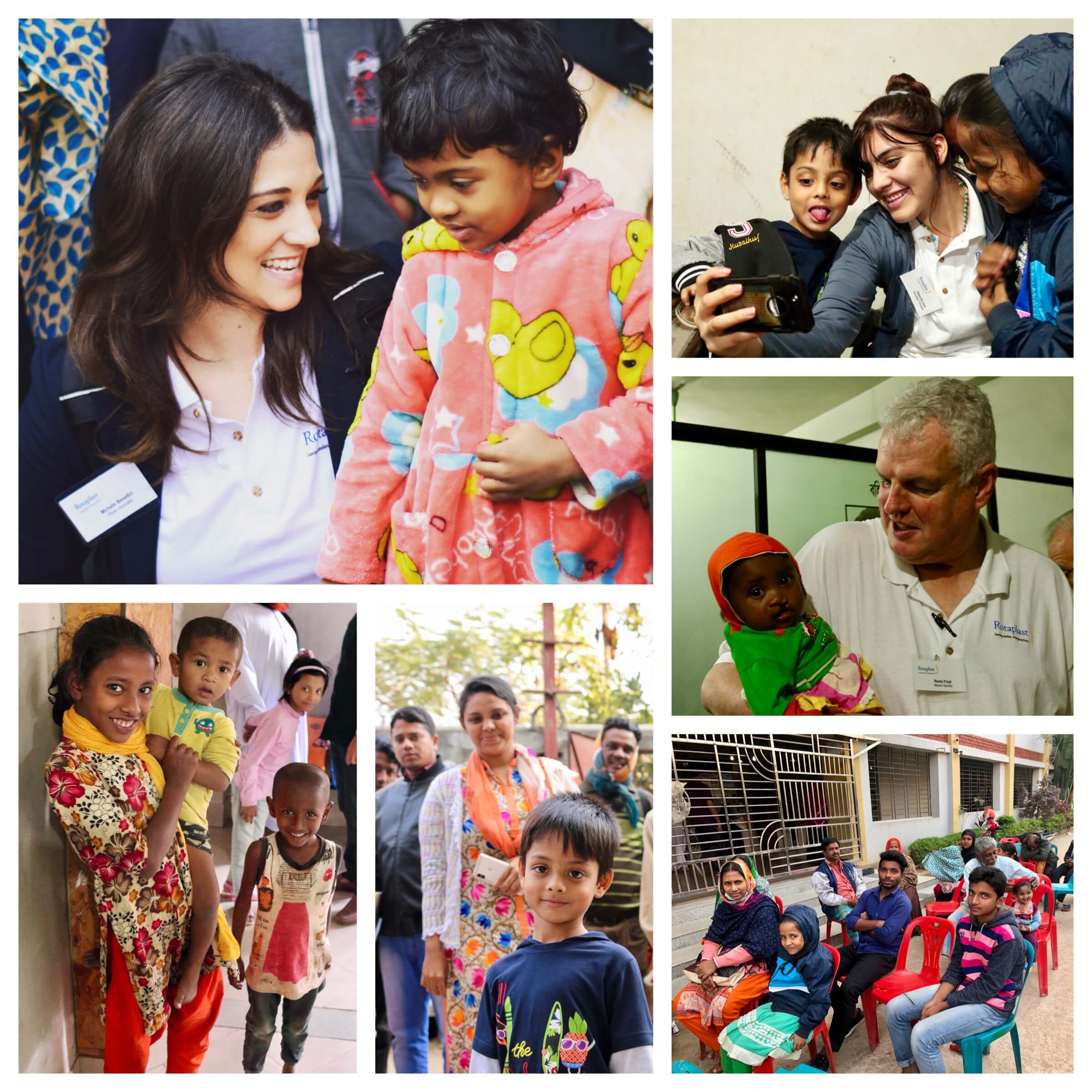
[L->R Michelle Benedict (Photojournalist) plays with a young Bengali patient. Diana Deleon (Recreation Therapist) shows the young children augmented reality Snapchat filters. Randall Floyd always finds the babies to hold and dote on]
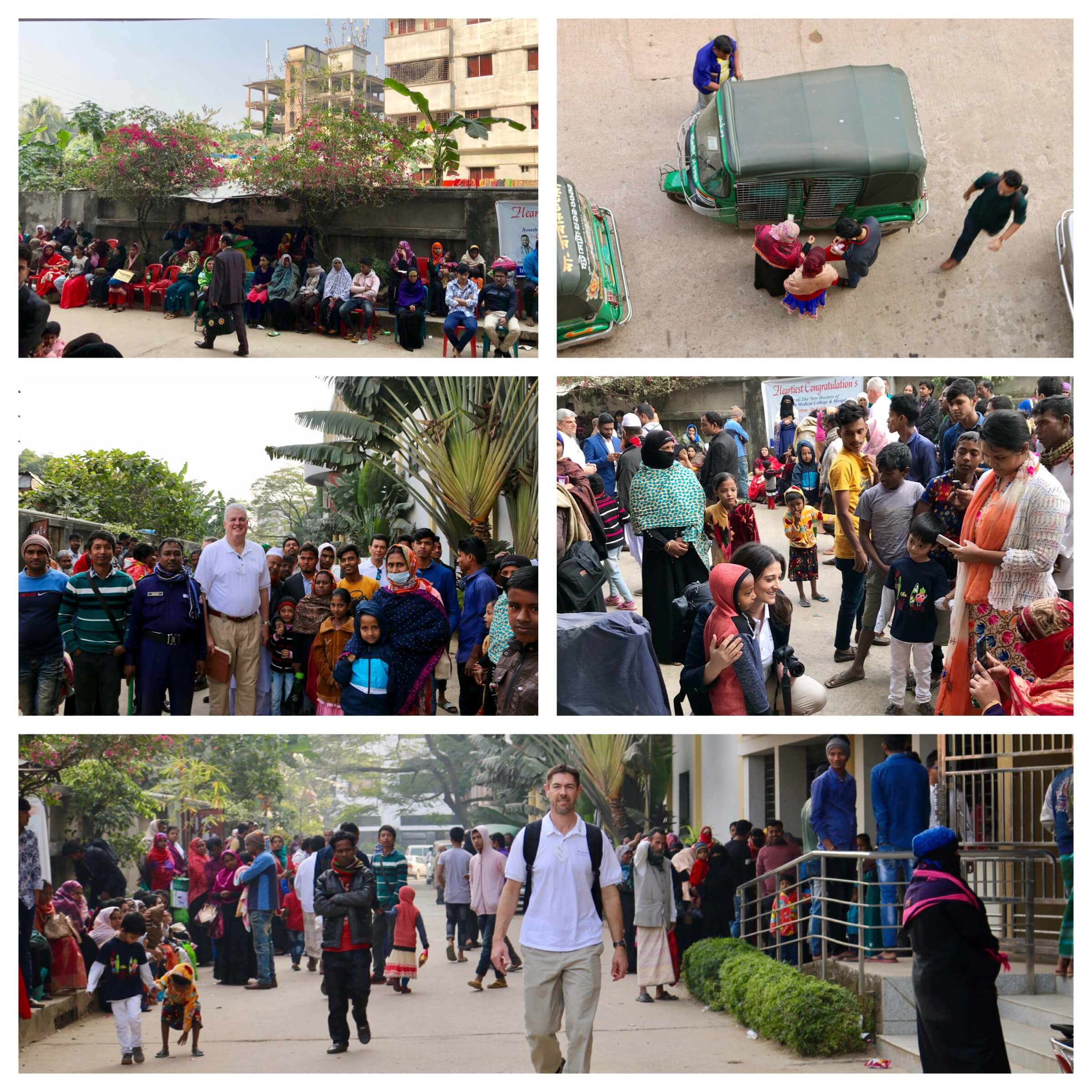
[L->R, T->B Randall Floyd visiting with patients waiting. Michelle Benedict meets waiting patients and poses for photos at their request. Tony Scheppmann (Medical Records) walks through town after visiting with local patients]
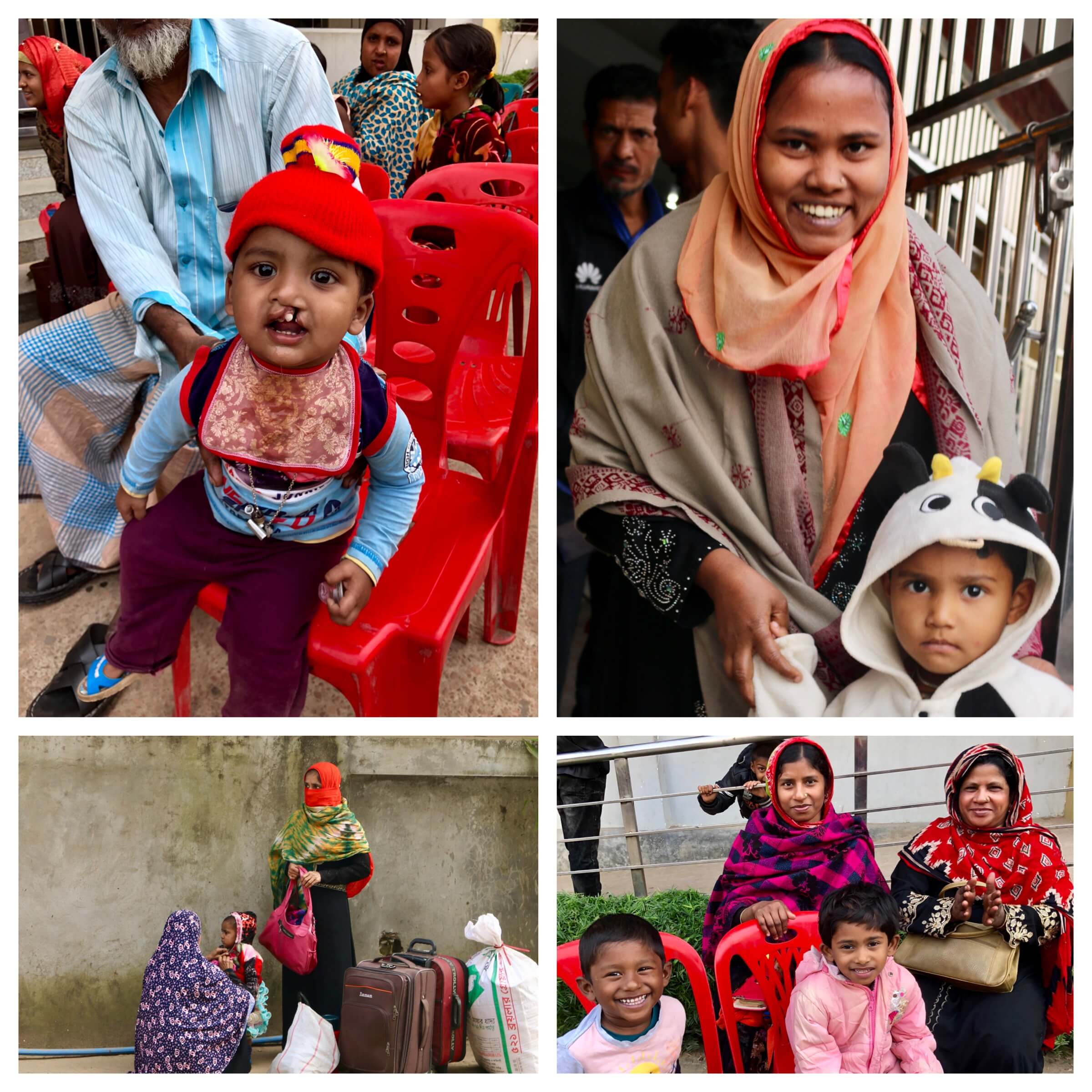
The intake process is really quite amazing and efficient. Potential patients go through a multi-step process where they first receive a medical record and have their photo taken for their file and tracking purposes. Then they go room to room to get assessed by the Surgeons, Anesthesiologists, Pediatricians, and Nurses who all have different criteria they check for before issuing a green light to get on the surgery schedule. Over the span of 8 hours, we evaluated about 112 patients for surgery slots. Then the schedule is made and they are notified what day/time to come back for their free operation. Unfortunately, we cannot operate on everyone and those that are turned away for not being well enough to undergo an operation are encouraged to come back next year. And indeed we saw many familiar faces this year that we have met from years past.

[Nan Madden (PNP) and Katherine Galagher (Lead Pediatrician) pose with a patient they have seen many times over the years on the Chittagong mission]
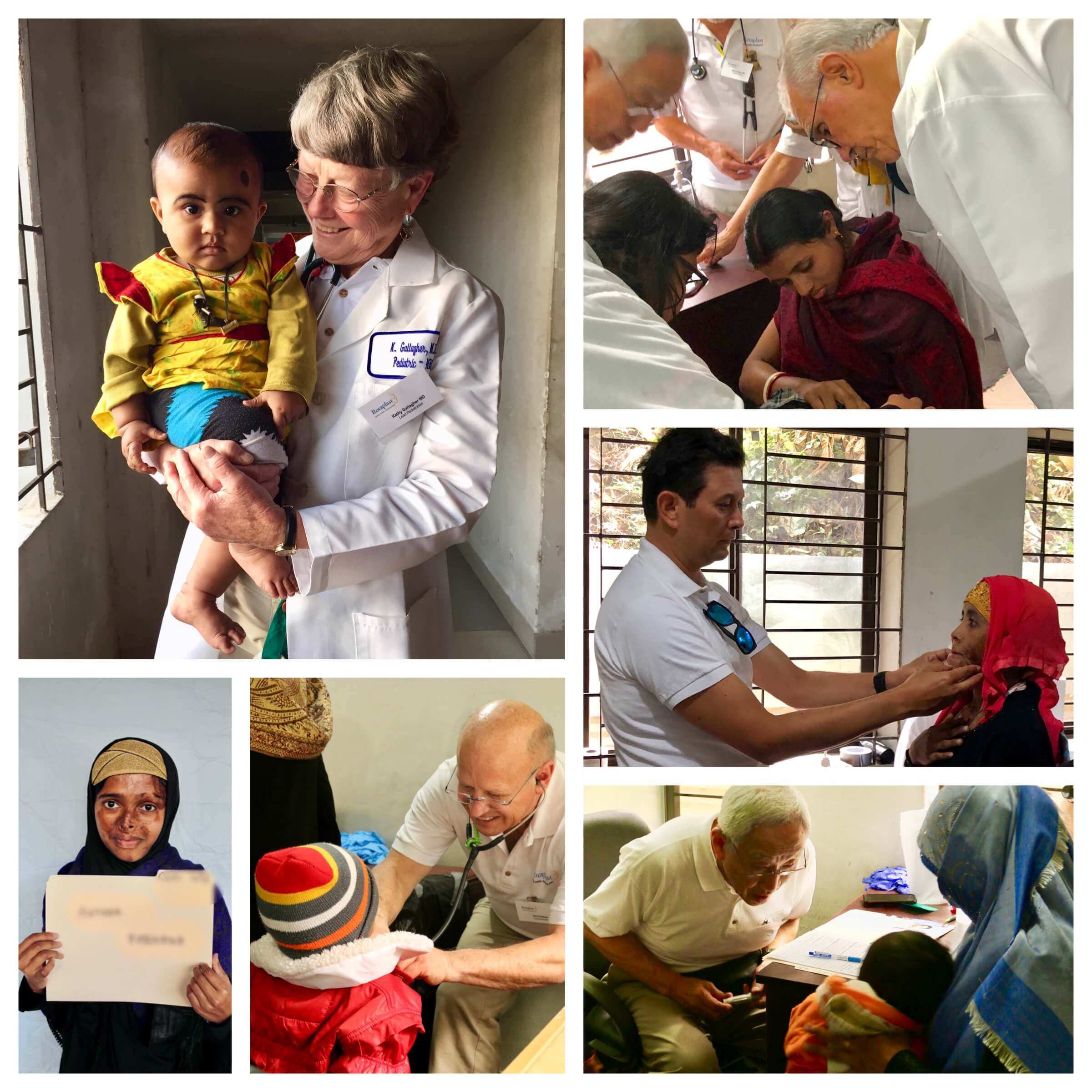
[L-R, T-P Katherine Gallagher holds a patient before the clinic opens. Wallace Chang (Surgeon) and Angelo Capozzi (Surgeon) exam a baby in her mother’s lap. Milton Solis (Surgeon) exams a repeat patient to check her progress and see what more can be done. A young girl poses with her new medical record to take her intake photo that will accompany her file throughout. David Stellway (Anesthesiologist) listens to the heart of a young potential patient. Wallace Chang soothes a patient during examination.]
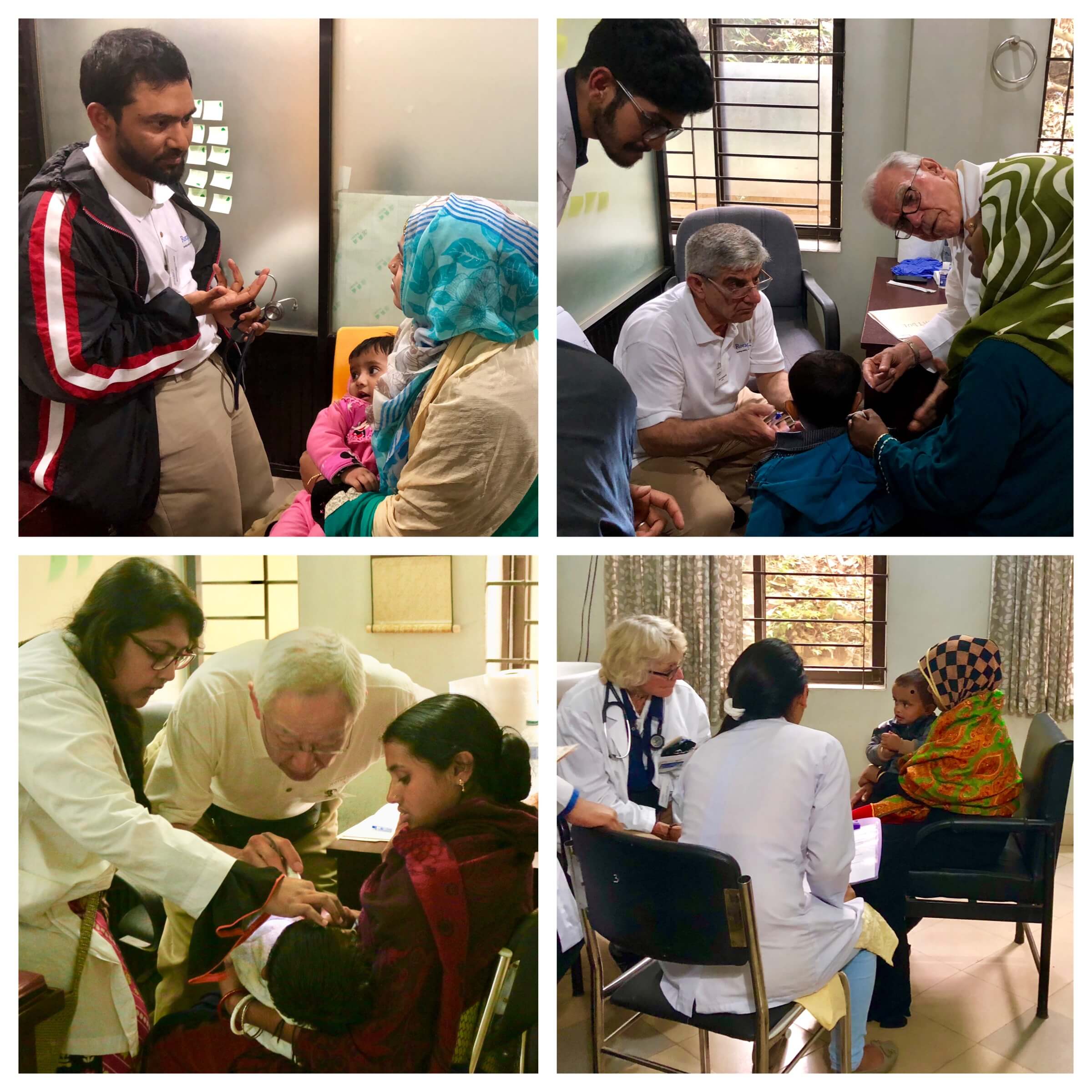
[L-R, T->B Mohammed Hannan (CRNA) explains his assessment to a patient’s mother. Adnan Uzunismail (Surgeon) listens to mother and translator while examining a patient. Wallace Change examines a patient with the help of a local Doctor. Nan Madden explains her assessment of the child’s readiness for surgery to his mother)
As Operations are scheduled to start tomorrow, there are many more opportunities for uncertainty to our plans. We stand ready and willing students to lean into what lessons Bangladesh has to teach us on this mission and find ways to make the best of any situation.




